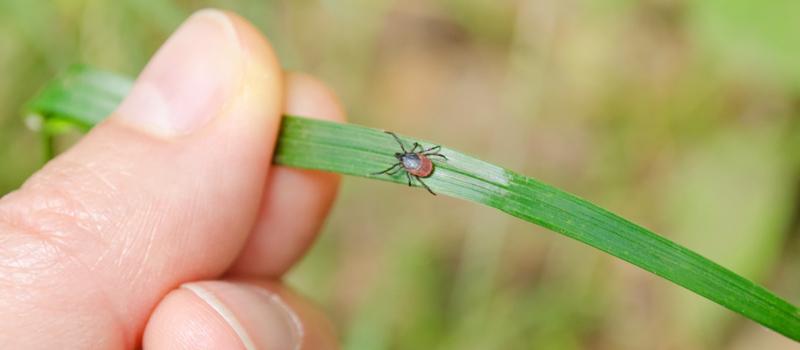Tick Nests: Real or Rumored?
Posted by Mosquito Squad
August 25, 2023

Have you ever wondered where ticks come from? After a hike or outdoor event, you might find a tick somewhere on you or your clothing. But how did it get there? And how can you avoid getting ticks in the future? All these questions and more can be answered by understanding what ticks are, their behavior, and where their "nests" are located.
Appearance
Ticks are unlike other insect pests in a few ways. To start, ticks aren’t actually insects at all. Ticks are classified as arachnids, meaning they are closer related to spiders than other bugs. This might be obvious from their appearance: eight legs, two body sections (head and abdomen), lack of wings, and no antennae.
Behavior
It's important to understand that ticks can only travel by crawling about. Their lack of wings makes them land-locked in their navigation, so ticks have to get creative when locating and latching onto hosts. Questing is another method ticks use to travel and grab onto hosts. By climbing up along pieces of vegetation, shrubbery, and overgrown grass, ticks can place themselves elevated from the ground at "host level." From there, ticks can use their frontmost legs to reach out and grab people, pets, and other animals that happen to come nearby.
This is all to say ticks are constantly on the move… so do ticks actually make nests at all?
Harborage
Before they can quest as mature tick adults, ticks have to grow and develop over two years. From egg to adulthood, ticks undergo a long metamorphosis to get to the pests we know (and hate).
Tick egg clusters are sometimes called "tick nests," though these clusters don't look or function like nests at all. Instead, these "nests" look like fish eggs or masses of red or brown orbs along the forest floor. An adult female tick can grow upwards of 1,000 eggs per clutch, with some tick species laying nearly 4,000 eggs in their lifetime. However, adult ticks do not shelter these egg masses with traditional nesting material, and once a female tick lays her clutch, she dies. So, despite being called a "tick nest," these masses function more as mounds of eggs than nurturing nests.
When considering tick harborage, ticks do tend to gather in another type of nest: animal nests. Ticks use animals' nests as shelter and food sources while they grow. Once nymphs hatch from their eggs, they seek a nearby food source. As tick nymphs are small, the best hosts at this life stage are small rodents like mice and rats. Ticks will occupy rodent nests, typically made of cotton, straw, grasses, and other malleable materials, and feed on the mice that inhabit them. Once ticks mature through their nymphal stages into adulthood, they hitch a ride on their rodent roommates and move out to search for bigger, better hosts (aka YOU!).
Tick Control
In either sense of the term, tick nests in your yard mean trouble for you. Call the Pros at Mosquito Squad today to get your tick problems under control. To learn more about our tick control options, contact us today for a free quote, or call (512) 488-5331.
